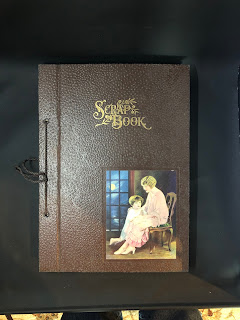#26 Legend. The Horse Thief! The True Story
My mother always talked about the horse thief in the Lloyd family. The supposed horse thief was a brother to her grandfather, George Martin Lloyd,. I could never remember if she said it was “Tony” or “Skook”. I began to research both of them and they led adventurist’s lives. “Skook” or Albert died in Montana in 1902 from appendicitis. But “Tony” or William lived in Fort Benton in 1900 and was a boarder and gambler. Pretty good chance he was the horse thief.
As I was sorting information on the Lloyd family, I came across a copy of the newspaper, the Waitsburg paper, The Times on 10 August 1894, with the story of the “cattle thieves” and not horse thieves. (story has been found in other Washington newspapers) Names were similar in the family so good story to research. The name was William Lloyd. Same as “Tony’s” given name!
1894 LLOYD, William The_Seattle_Post_Intelligencer_Tue__Aug_7__1894_.jpg
The newspaper reports that there had been numerous cattle rustling events in the area and the authorities set up a “sting”. There maybe have had help with knowledge of the attempted cattle rustling from an insider.
1894 LLOYD, William--Spokane_Chronicle_Mon__Aug_6__189
The cattle theft occurred on 6 August 1894, and shoot out among thieves and authorities occurred. William Lloyd received a gunshot to his leg and one leg was broken. William Lloyd was arrested and charges were filed. At the arraignment William pled not guilty. He was charged with the crime of stealing of one or more head of cattle.
The trial was held in Asotin, Washington and verdict, guilty as charged, was delivered on 12 April 1895. He was sentenced to serve 3 years at the State Prison.
I wondered if the penitentiary records were on file for the Walla Walla Penitentiary. And they were! For a nominal fee of $17, I was able to obtain his entire file. The description of the inmate listed his parents as deceased, where born and his age when his parents died. He was 4 years old when his mother died and 7 when his father died. Everything on the description matched the family information in my inherited genealogy collection. His stated that his closest relative was A. G. Lloyd who was the father of William Lloyd in Fort Benton; my great great grandfather, my mother’s great grandfather and William Lloyd, the inmate’s, uncle.
The description, created when he was received at the prison on 15 September 1895, includes his physical description as well as injuries suffered when captured. William was 28 years old, his occupation was horseman. There is no mention that his leg was amputated.
I received the entire court case which began in the county of Asotin. He was sentenced to 3 years at the State Prison. He received a pardon on 27 November 1896 from the Governor of Washington, J. H. McGraw. William served over a year at the State Prison.
One of my mother’s cousins was living when I discovered the true story. I sent her the information and she promptly called me after reading it. She said that she was very upset at what I had discovered, I explained it was history. She replied, ”No that wasn’t the problem. For all these years, I have told others that it was my uncle that was the horse thief and now I have to go tell everyone I was wrong and it was my first cousin once removed!" She also stated that on Sunday they always went to visit one of the cattle thieves and she always wondered why he limped!
William Orchard Lloyd
mug shot from 1894
Identification Record from Prison




























